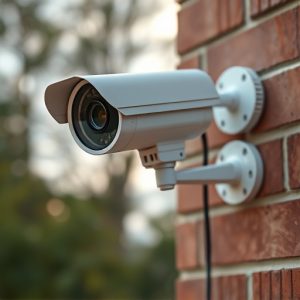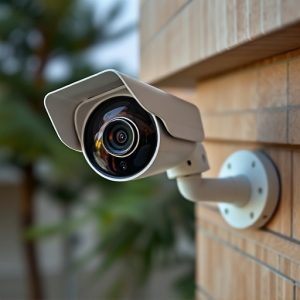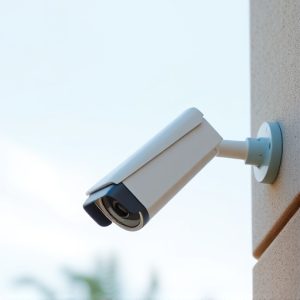Realistic Dummy Camera Placement: Expert Installation Guide for Optimal Security
Strategically place realistic dummy cameras near entry points, windows, and high-traffic areas to de…….
Strategically place realistic dummy cameras near entry points, windows, and high-traffic areas to deter criminals without recording footage. Identify key surveillance zones, consider demographics and activity patterns, and maintain discreet placement while respecting privacy rights. Use high-quality models with authentic features, test batteries and connections regularly, and clean cameras to ensure maximum effectiveness as part of a balanced security system.
“Uncover the art of strategic surveillance with our guide to realistic dummy camera installation tips. In today’s security-conscious world, understanding how to deploy dummy cameras effectively is paramount. This comprehensive article delves into the intricacies of these unassuming yet powerful tools, offering insights on placement, ethics, and technicalities.
From assessing key points in your area to maintenance strategies, we equip you with knowledge to ensure longevity and optimal performance. Discover the secrets to mastering realistic dummy camera installation.”
- Understanding Dummy Surveillance Cameras and Their Purpose
- Assessing the Area: Identifying Key Placement Points
- Ethical Considerations for Realistic Camera Installation
- Technical Aspects of Setting Up Dummy Cameras
- Maintenance and Effective Use Strategies for Longevity
Understanding Dummy Surveillance Cameras and Their Purpose
Dummy surveillance cameras, also known as fake or decoy cameras, are an innovative and effective deterrence tool for enhancing home or business security. These realistic devices mimic the appearance and features of genuine surveillance equipment, but serve as a visual deterrent to potential intruders. By strategically placing dummy cameras, you can create the illusion of a comprehensive security system, thereby discouraging criminal activity without actually recording footage.
When it comes to installation, realistic dummy camera placement tips involve considering factors such as visibility, proximity to entry points, and natural line-of-sight. Place these cameras in areas that are easily visible from the street or public spaces, close to doors, windows, or other potential access points. Strategically positioning them in plain sight can significantly reduce the risk of break-ins, vandalism, or other criminal behavior.
Assessing the Area: Identifying Key Placement Points
When assessing an area for dummy surveillance camera placement, the first step is to identify key strategic points. Consider the layout and physical features of the location; natural obstacles like trees or buildings can serve as ideal hiding spots for realistic dummy cameras. Look for blind spots where real security cameras might be missed—these are often areas where potential intruders would have unobserved access. Gates, entryways, and common gathering points within the surveillance zone are critical placement considerations.
Additionally, think about the area’s demographics and typical activity patterns. For instance, a high-traffic commercial district will require different camera positioning than a residential neighborhood. Realistic dummy camera installation tips involve balancing the need for coverage with maintaining a natural, unobtrusive appearance, so choose placement points that both deter potential criminals and blend seamlessly into the environment.
Ethical Considerations for Realistic Camera Installation
When planning a realistic dummy camera installation, it’s crucial to balance security needs with ethical considerations. While the primary goal is to deter crime or monitor areas effectively, the placement of these devices must respect privacy rights and avoid creating an atmosphere of surveillance that could be perceived as intrusive. This means avoiding prominent, obvious placements that would immediately signal their presence as dummy cameras. Instead, opt for discreet locations that mimic genuine security setups.
Ethical installation practices involve ensuring these cameras do not capture sensitive or private areas without consent. For residential properties, this might mean avoiding places like bathrooms, bedrooms, or other spaces where individuals expect privacy. Commercial settings should also adhere to data protection regulations, only recording and storing footage for legitimate security purposes and for a reasonable duration. Transparent signage can help inform individuals that cameras are in operation, striking a balance between security measures and the rights of those within the monitored area.
Technical Aspects of Setting Up Dummy Cameras
When setting up dummy surveillance cameras, paying attention to technical aspects is crucial for achieving a realistic appearance and effective deterrence. Start by selecting high-quality dummy cameras designed to mimic real security equipment closely. Ensure they have detailed features like LED indicators, realistic casing, and adjustable mounting options. This authenticity will make them more convincing to potential intruders.
During installation, consider factors such as placement angle, distance from real cameras, and visibility lines. Mount the dummy cameras at strategic angles to cover blind spots while ensuring they don’t obstruct regular views. Positioning them near actual security systems or in areas with frequent activity increases their effectiveness. Regularly test batteries and connections to keep them operational, maintaining a sense of vigilance throughout your property.
Maintenance and Effective Use Strategies for Longevity
When implementing realistic dummy camera installation tips, maintaining these devices is crucial for their long-term effectiveness. Regular cleaning and inspection are essential to ensure optimal performance. Dust, debris, and even water can impact the camera’s functionality, so a simple wipe-down with a microfiber cloth and occasional waterproof treatment can go a long way. Additionally, checking the battery life and ensuring proper power supply will prevent unexpected outages that could compromise security.
To maximize the surveillance benefits, place these cameras in strategic locations visible to potential intruders. Effective use strategies include positioning them near entry points, windows, and areas prone to suspicious activity. However, avoid obvious placement that might alert criminals; instead, opt for subtle yet strategic spots. Regularly testing the footage quality and camera functionality will also help maintain the integrity of your security system, ensuring you have accurate, reliable data for any potential incidents.
Implementing realistic dummy surveillance camera placement requires a blend of technical know-how, ethical awareness, and strategic thinking. By understanding the purpose of these cameras, assessing your area for key placement points, and considering the technical aspects of setup, you can create an effective security system. Additionally, maintaining and using these cameras ethically ensures optimal longevity and functionality. Follow these dummy surveillance camera placement tips for a comprehensive and responsible installation process.


